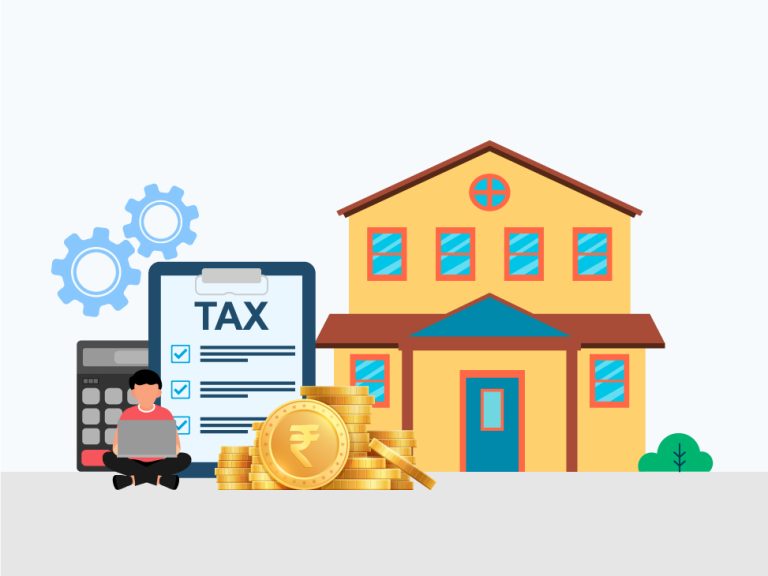Yamini Pahwa
Getting home loan is very BASIC now
Get a loan in under 5 mins

When applying for a home loan, one of the essential documents you’ll need is your Income Tax Return (ITR). This document not only reflects your financial health but also reassures lenders of your ability to repay the loan. Here’s a detailed look at why ITR is crucial for securing a home loan and a step-by-step guide on how to file it in 2024.
Table of Contents
ITR serves as a reliable and legal proof of your annual income. Banks and financial institutions use it to assess your income level and stability over the years, which is a key determinant in the loan approval process.
Submitting a well-documented ITR helps establish your creditworthiness. It shows that you are a responsible citizen who regularly complies with tax laws, which in turn builds trust with lenders.
The amount of home loan you are eligible for is directly proportional to your income. By reviewing your ITR, lenders can decide the maximum loan amount you can comfortably repay without financial strain.
Often, a strong financial background, evidenced by your ITRs, can make you eligible for more competitive interest rates. A steady and high income documented over several years can get you better terms on your loan.
Having your ITRs ready can speed up the loan application process. It provides the lenders with all the necessary information at once, reducing the time needed for income verification.
Suggested read: Missed the ITR Deadline
Filing your Income Tax Return accurately is crucial not only for tax compliance but also for your future financial undertakings like applying for a home loan. Here’s how you can file your ITR in 2024:
Step 1: Collect Necessary Documents
Before you begin the filing process, gather all required documents including:
Visit the official Income Tax e-Filing portal. If you’re a new user, you’ll need to register using your PAN, which will serve as your user ID. Existing users can simply log in with their credentials.
Select the correct Income Tax Return form based on your income sources. For instance, salaried individuals generally need to file ITR-1 or ITR-2, depending on the complexity of their income.
Enter all relevant data in the ITR form. This includes personal information, income details, deductions claimed, and tax already paid. Double-check all entries to ensure accuracy to avoid any discrepancies that might lead to processing delays.
For salaried employees, ensure that the income details match those in Form 16 issued by your employer. Cross-verify with your bank statements and other financial documents.
Suggested read: Loan Against Property Without ITR
Don’t forget to claim deductions under various sections like 80C, 80D, etc., for investments such as ELSS, PPF, medical insurance premiums, and more. These deductions can significantly reduce your taxable income.
After filling out all details, calculate your net tax liability. The portal’s built-in calculator can help you determine if any additional tax needs to be paid or if a refund is due.
Provide your banking details to facilitate smooth tax transactions.
If you owe tax, make sure to pay it through the online tax payment gateway linked to the e-filing portal. Provide the Challan details in your ITR.
Once all details are confirmed and any due tax is paid, submit your ITR. Upon submission, you’ll receive an acknowledgment form, ITR-V, which needs to be verified.
The final step is to e-verify your ITR-V using options like Aadhar OTP, EVC through your bank account, or by sending a signed copy to the Income Tax Department.
An accurately filed ITR can smooth the path to securing a home loan by presenting a clear picture of your financial standing. As 2024 approaches, ensure that you are well-prepared to file your ITR correctly to leverage its benefits during your home loan application process. Remember, a well-documented financial history is your best ally in securing a favorable home loan.
The Income Tax Return (ITR) plays a crucial role in the home loan process as it serves as a key document to verify the applicant’s income. Lenders use the ITR to assess an applicant’s financial health and repayment capacity, which helps them decide on the loan amount, approval, and interest rates.
Yes, submitting an ITR is generally mandatory when applying for a home loan. It provides proof of income and tax compliance, which are critical for lenders to evaluate the loan application. However, some lenders might consider alternative documents for self-employed or non-traditional applicants.
You can claim deduction for home loan interest under Section 24 of the Income Tax Act. When filing your ITR, you can deduct up to INR 2 lakh on the interest paid on a home loan for a self-occupied property. This is reported under the ‘Income from House Property’ section in your tax return.
No, home loans are not fully exempt from income tax. However, the government offers significant tax benefits on both the principal and interest components of the loan repayment. The principal repayment qualifies for deduction under Section 80C up to INR 1.5 lakh annually, and the interest payment is deductible under Section 24 up to INR 2 lakh annually for a self-occupied property.
Saving tax with a home loan can be achieved by:
1.Claiming deductions on the principal amount under Section 80C up to INR 1.5 lakh annually.
2.Deducting interest payments under Section 24 up to INR 2 lakh for a self-occupied house.
3.Claiming additional interest deduction f INR 50,000 under Section 80EE for first-time homebuyers, if certain conditions are met.
4.Joint home loan borrowers can each claim these deductions if they are co-owners of the property and each contributing towards the repayment.
Published on 30th April 2024